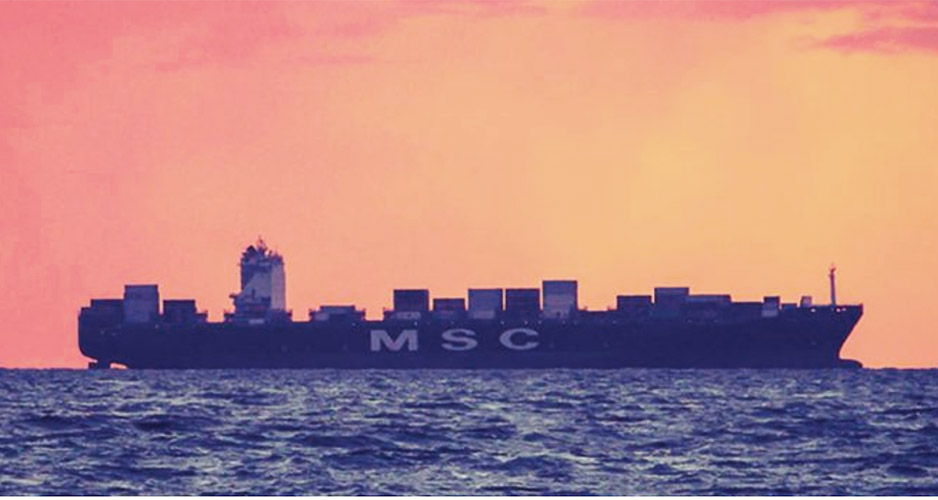By Eric Smith
<span style="color: #9e9e9e;">The coronavirus has ravaged the outdoor industry for the last three months, starting with supply chain disruptions and then escalating into shuttered retail doors and shattered consumer confidence.
Even when the country reopens, as it’s slowly beginning to do with some states now lifting their lockdowns, the looming recession will inflict damage for a prolonged period. Some brands won’t survive.
Though not as intense in severity, another pain point has plagued the broader outdoor industry for more than two years and continues to this day—the trade war with China.
As the administration announced tariff increase after tariff increase since early 2018, many brands shifted their production to other countries while others, specifically those who didn’t feel comfortable sourcing elsewhere, absorbed the added expense and asked their manufacturing and retail partners to share the monetary burden. No matter the response, all businesses have been impacted.
And while tariffs haven’t dominated headlines of late quite like coronavirus-related issues—in part because almost all businesses are being impacted by the global pandemic—they remain a scourge for the industry.
Now, outdoor companies that import their goods might be able to use two programs to secure much-needed tariff relief.
The Trump administration has announced some exclusions on Section 301 tariffs, allowing brands to earn refunds retroactively on duties already paid or to no longer pay those duties moving forward.
And it has introduced a 90-day deferral on all tariffs, taxes and fees on a select group of products imported into the U.S. in March and April for companies impacted by COVID-19.
…
<span style="color: #9e9e9e;">On Thursday, the Outdoor Industry Association (OIA) hosted a webinar, “Protect Your Bottom Line – Relief From China 301 Duties And A 90-Day Tariff Deferral,” around how outdoor companies can fight back against the tariff burden.
Rich Harper, manager of international trade for OIA, moderated the webinar, which featured Megan Costello, vice president, trade and customs policy, for the Washington, DC-based trade firm Sorini Samet & Associates (SSA), and Nicole Schude, of counsel for the organization.
Let’s begin with tariff exclusions.
As OIA outlined in its webinar description, “The Office of the U.S. Trade Representative (USTR) recently announced that it approved another group of tariff exclusions for products hit by the List 3 China 301 tariffs, including several outdoor products. As a result, any company can gain tariff relief on items that match the product description approved by the USTR. If your product is eligible, additional action needs to be taken to ensure your ability to obtain a full retroactive refund.”
Costello and Schude outlined the exclusion process, including the eligible products—e.g., backpacks with hydration packs, bikes, duffel bags, messenger bags—and the time frame for the exclusion. It is retroactive to September 2018, when the List 3 tranche kicked in, and will be valid through August 7, 2020.
For companies to take advantage of this opportunity and reduce their tariff costs, they must know where to begin. The first step, Costello said, is to determine if your products fall under the exclusion umbrella. She suggested working with your product team and whoever handles customs to determine the exact Harmonized Tariff Schedule (HTS) codes for the products that may be granted a tariff exclusion.
Any importer can benefit from a granted exclusion if the product matches both the subheading and the exact specifications of the granted product description. If the product matches the written description but is not currently classified under that provided HTS, SSA recommends that you check with your customs broker or counsel to review its applicable classification.
To claim duty refunds using a product exclusion, importers can either submit a post-summary correction (PSC) or file a protest. For future imports, the Chapter 99 number assigned to that product exclusion must be used on entries and entry summaries. Guidance on this process issued by U.S. Customs and Border Protection (CBP) can be found here.
Costello cautioned that this is not an easy process, but any financial relief in the form of tariff refunds could be worth the trouble depending on the amount imported and the amount of duties paid on said products.
“If you meet the exclusion specifications, then congratulations,” she said. “But unfortunately, because most of these refunds are retroactive, there’s a lot more work that you have to do to actually get the money back and to use the exclusion.”
More information on this refund process is available here.
…
<span style="color: #9e9e9e;">The next tariff relief program now available is a 90-day deferral on all tariffs, taxes and fees on a select group of products imported into the U.S. in March and April of 2020 for companies impacted by COVID-19.
This program is not for goods made in China but instead for certain products such as footwear and apparel made in nations with “most-favored” status.
“This payment flexibility will be available only for importers with a significant financial hardship and will apply to payments for goods entered in March or April,” CBP wrote on April 19. “Imports subject to duties associated with antidumping and countervailing duties (AD/CVD), and Section 201, 232 and 301 Trade Remedies are not included in this relief effort.”
Schude recommended brands submit comments to push for inclusion in the duty deferral. More information on that process is available here.
“Anything and everything that you can think of that could be used to respond to this event, I suggest filing comments,” said Schude. “The other caveat is that it can be a product that has previously been denied an exclusion request or has was taken off and added back on. It absolutely doesn’t matter. So everything is on the table for this.”
The webinar included more details on how to apply for the exclusion, pitfalls to avoid and how to take advantage of the 90-day deferral. Click here to listen to the webinar in its entirety.
Photo courtesy OIA
















